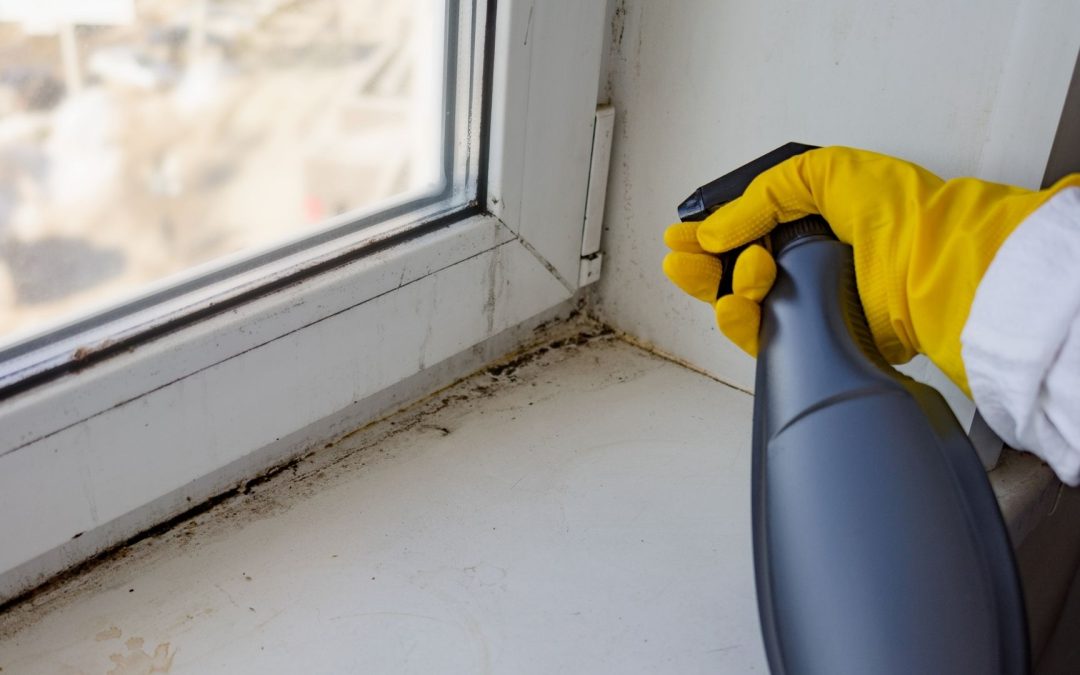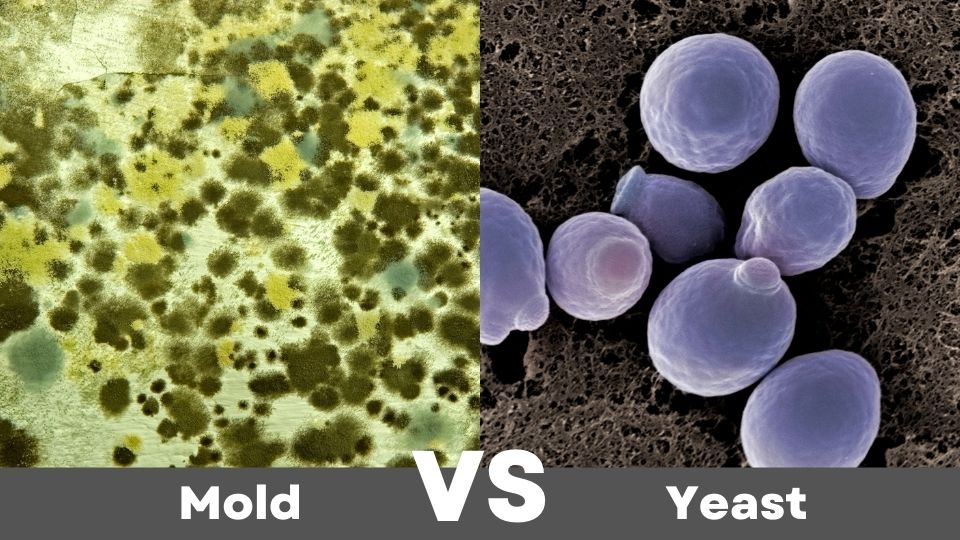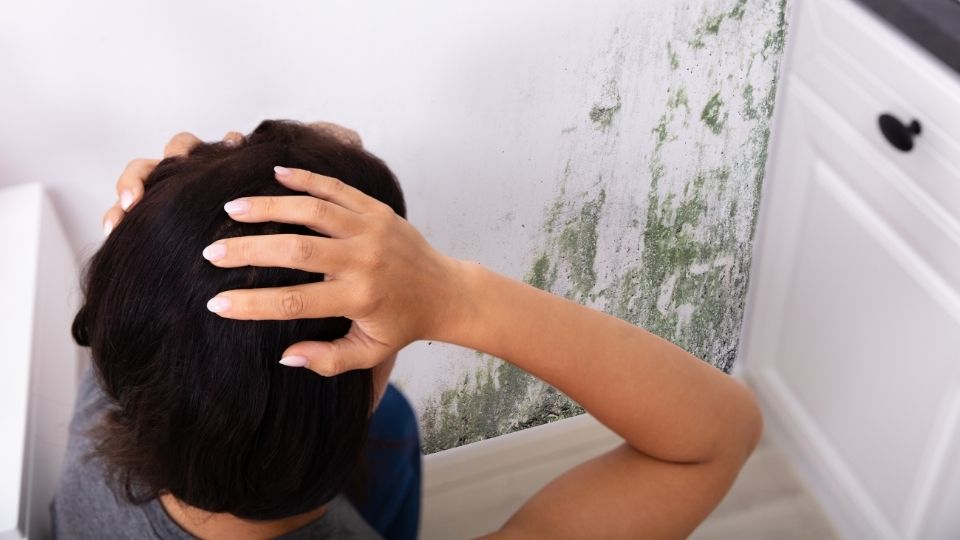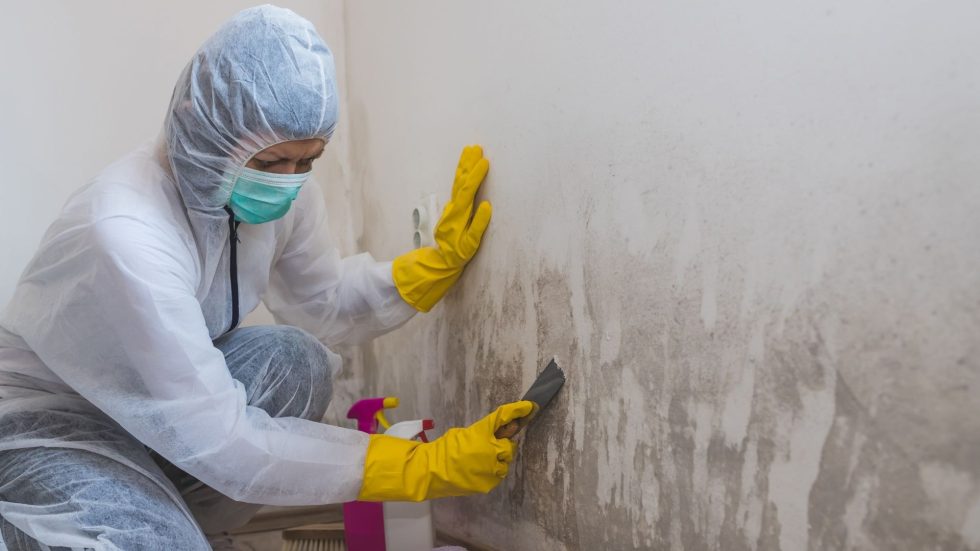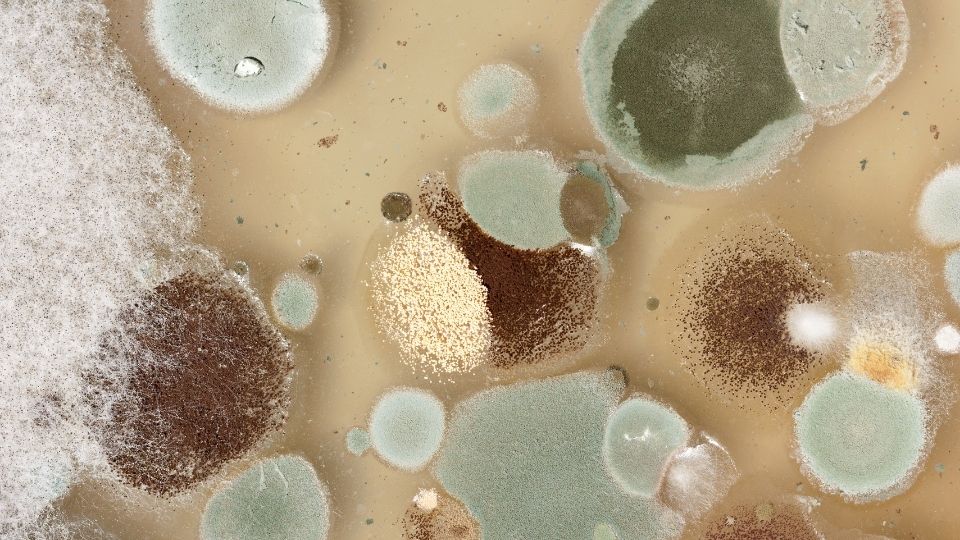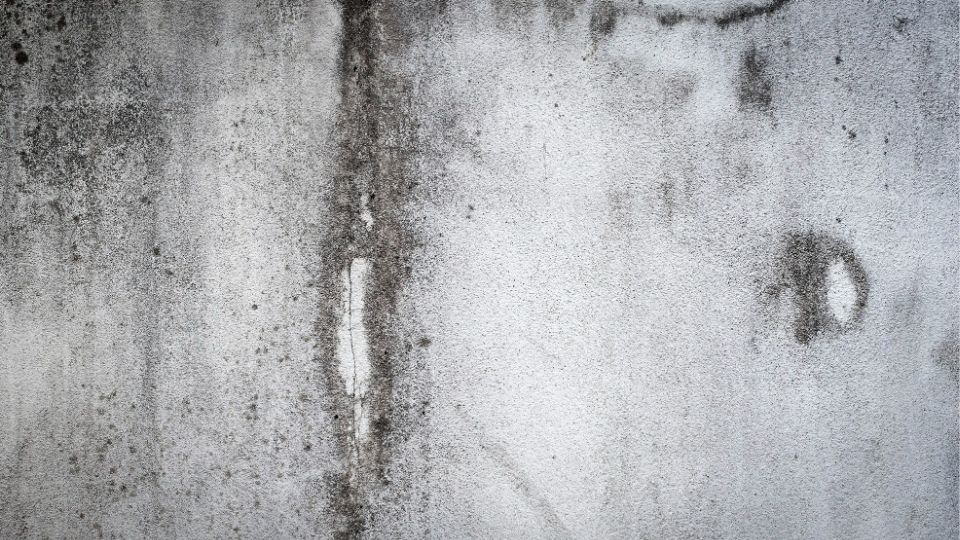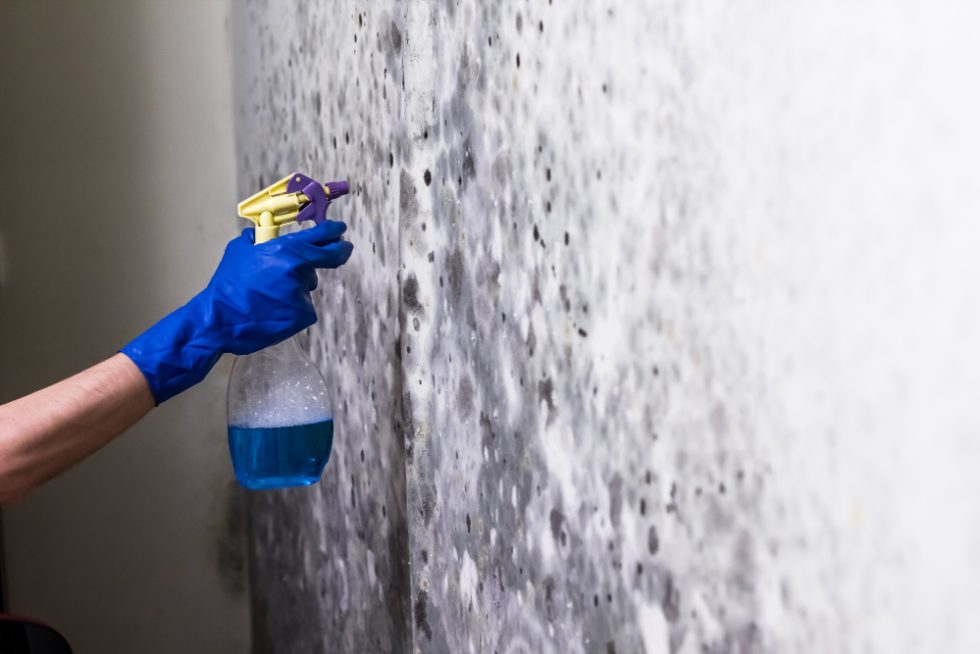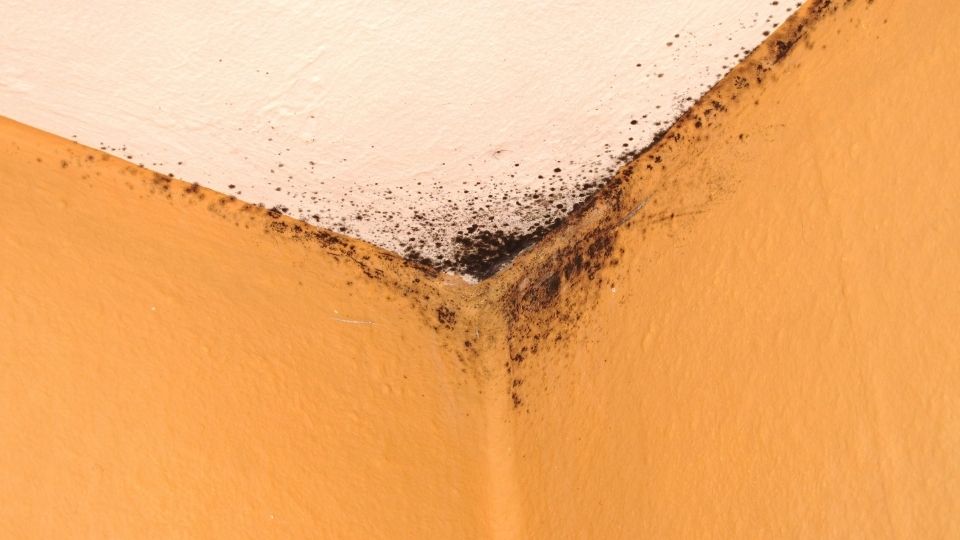
by Mold-B-Gone | May 16, 2022 | Mold Facts
Mold is a fungus that can be found both indoors and outdoors. It is often green, black, or white in color, and it grows in humid environments. Mold can cause a number of health problems, including respiratory issues and skin irritation. But can mold cause sore throats? In this blog post, we will discuss the link between mold and sore throats, as well as some tips for preventing mold-related health problems.
Reactions to Mold Can Vary
Depending on a person’s sensitivity to mold and the amount of mold present, some people may experience no symptoms at all, while others may develop a sore throat, coughing, or difficulty breathing. In severe cases, mold exposure can lead to pneumonia or other serious respiratory illnesses. If you are concerned that you may have been exposed to mold, it is important to see a doctor as soon as possible.
Learn more by reading What Is the Link Between Mold and Parkinson’s Disease?
Mold spores are often found in the air, and they can enter your body through your nose, mouth, or eyes. Once they are inside your body, they can travel to your lungs and begin to grow. This growth can cause inflammation and irritation in your lungs, which can lead to a sore throat. Mold spores can also cause allergic reactions, and people with allergies to mold are more likely to develop a sore throat after exposure.
Reducing Your Exposure to Mold
There are a few things you can do to reduce your risk of developing a mold-related health problem. First, try to keep your home clean and free of clutter. This will make it easier to spot mold growth and clean it up before it has a chance to spread. Second, use an air purifier or HEPA filter in your home to remove mold spores from the air. Finally, if you have any medical conditions that make you more susceptible to respiratory infections, be sure to see your doctor for regular checkups and get vaccinated against influenza and other respiratory viruses. By taking these precautions, you can help protect yourself from the harmful effects of mold.
Conclusion
Mold can cause a number of health problems, including sore throats, but with the right precautions, you can protect yourself from its harmful effects. If you think you may have been exposed to mold, be sure to see a doctor as soon as possible. And remember, the best way to prevent mold-related health problems is to keep your home clean and free of clutter. Thanks for reading! And if you need commercial mold inspection in Atlanta, give us a call.

by Mold-B-Gone | May 2, 2022 | Mold Removal
Mold is a type of fungus that can grow almost anywhere there is moisture and organic material. It can cause health problems in people who are allergic to it, and it can also damage property. If you have mold growing in your home, you may be wondering if bleach is an effective way to treat it. In this blog post, we will explore the effectiveness of bleach at treating mold and provide some tips for preventing mold growth.
Does Bleach Kill Mold?
The answer to this question is both yes and no. Bleach can kill mold on hard surfaces, such as tile and glass. However, bleach does not kill mold spores on porous surfaces, such as wood and drywall. The reason for this is that bleach only kills the mold spores on the surface of the material. It does not penetrate into porous materials to kill the roots of the mold. As a result, mold can quickly regrow on treated surfaces if they are not properly cleaned and dried afterward.
So, while bleach can be effective at killing mold on some surfaces, it is not a complete solution for mold removal. If you have mold growing in your home, you should contact a professional Mold Remediation company to have it removed.
Preventing Mold Growth
The best way to deal with mold is to prevent it from growing in the first place. There are a few things you can do to reduce the risk of mold growth in your home:
- Keep indoor humidity levels low, ideally between 30 and 50 percent. Use a dehumidifier or air conditioner if necessary.
- Fix any leaks in your plumbing or roof as soon as possible.
- Ventilate damp areas such as kitchens, bathrooms, and laundry rooms. Use an exhaust fan or open a window when cooking, showering, or doing laundry.
- Use mold-resistant products when remodeling or building new construction. Materials such as drywall, paint, and carpet that are labeled “mold-resistant” can help to prevent mold growth.
Need basement-specific ideas? Read 10 Tips to Prevent Basement Mold.
Following these tips, you can help to prevent mold from growing in your home. However, if you already have mold growing in your home, it is best to contact a professional Mold Remediation company to have it removed. Bleach can be effective at treating mold on some surfaces, but it is not a complete solution for mold removal. Taking steps to prevent mold growth is the best way to keep your home healthy and free of this damaging fungus.
Contact us today if you need mold cleaning service in Atlanta. We are here to help! Visit our website or give us a call.

by Mold-B-Gone | Apr 20, 2022 | Mold Facts
Do you know the difference between mold and yeast? If not, you’re not alone. Many people don’t know the difference, or even that there is a difference! In this blog post, we will discuss the differences between mold vs. yeast, as well as some of the health risks associated with each. We will also provide tips on how to prevent mold and yeast growth in your home.
Learn more by reading Mold vs. Fungus: Their Similarities and Differences.
What Is Mold?
Mold is a type of fungi that can be found both indoors and outdoors. Mold grows in moist, warm environments and can often be found in damp areas such as basements, bathrooms, or kitchens. Mold reproduces by releasing spores into the air. These spores can cause allergic reactions in some people, including runny nose, sneezing, watery eyes, and coughing. In severe cases, mold exposure can also lead to difficulty breathing.
Those with asthma or other respiratory conditions are especially at risk for health problems related to mold exposure. If you suspect that you have a mold problem in your home, it is important to have it addressed immediately by a professional.
What Is Yeast?
Yeast is a single-celled microorganism that is classified as a fungus. Unlike mold, yeast grows best in warm, sugary environments. Yeast is often used in baking to help bread rise. It can also be found in beer and wine making. When yeast ferments, it produces alcohol and carbon dioxide gas.
Yeast infections are a common type of fungal infection. They can occur on the skin or in mucous membranes. However, yeast can also grow on the surfaces of your home if the right conditions are present.
How Can I Prevent Mold and Yeast Growth In My Home?
There are several things you can do to prevent mold and yeast growth in your home:
- Keep your home clean and free of clutter.
- Fix any leaks or other sources of moisture immediately.
- Ventilate damp areas such as the kitchen and bathroom.
- Use an air conditioner or dehumidifier to control humidity levels.
- Be sure to dry wet areas completely after cleaning them.
Mold and yeast can both be dangerous to your health, so it’s important to be aware of the signs of each and take steps to prevent their growth in your home. If you think you may have a mold or yeast problem, contact our professionals for mold removal in Atlanta.

by Mold-B-Gone | Apr 6, 2022 | Mold Facts
Mold is a nasty problem to have in your home. Luckily, it can’t grow on all surfaces. But what about plaster?
If your home is like most, it has a lot of plaster in it. Today, we are going to examine whether or not mold can grow on plaster and what this means for you as a homeowner.
Can Mold Grow on Plaster? No…But There’s More to It
Mold needs two things to grow: a food source and moisture. Plaster is inorganic and non-porous, so it can’t provide mold with a food source or moisture. But that doesn’t mean that plaster is immune to mold growth.
Mold does still grow on plaster if there is another surface for it to feed off of like wood or paper. And if there is enough moisture present, mold will find a way to grow.
So, while mold cannot directly grow on plaster, it can still cause problems in your home. If you have a mold problem, you should address it as soon as possible to prevent it from getting worse and to protect the health of everyone who lives in or visits your house.
What Surfaces Can Mold Grow On?
Mold can grow on just about any organic surface as long as there is moisture present. This includes wood, paper, drywall, and insulation. It can even grow on certain types of paint and upholstered furniture.
Additionally, dirt and dust can create ideal environments for mold to grow. So any dirty surface is one mold can exploit. That’s why it is often found in air filters and dirty air ducts. And why mold grows in your attic.
Spotting Mold in Your Home
Mold can be tricky to spot if you aren’t trained to do so. It often looks like a stain or discoloration on surfaces. And it can have a musty smell. If you suspect mold, the best thing to do is have a professional come and take a look. They will be able to confirm whether or not you have mold and help you develop a plan to get rid of it.
Take Action Against Mold Today
If you think you may have mold in your home, don’t wait. The longer you wait, the worse the problem will become. Contact our professional mold cleaning service in Atlanta today and get rid of that mold for good!

by Mold-B-Gone | Feb 16, 2022 | Mold Remediation, Uncategorized
How long does mold remediation take? Mold remediation can take some time to complete. The amount of time it takes to remediate the mold will depend on a variety of factors, including the size and location of the contamination, as well as the type of mold. In this blog post, we’ll outline what happens during mold remediation and how long you can expect mold removal to take.
The Preparation Stage
This stage usually takes the longest, as it involves setting up the worksite and ensuring that all of the necessary equipment is on hand. Depending on the size of the contaminated area, this could take anywhere from one to five days.
Clean-Up
Once the preparation stage is complete, it’s time for the actual clean-up process to begin. This generally takes less time than the preparatory phase, and typically lasts between one and two days.
Disinfection
Next comes disinfection, which can be done either with chemicals or UV light. This step usually only requires a few hours, though in some cases, it may take up to 24 hours.
Drying
After disinfection, the remediation team will dry out any damp areas in order to prevent further mold growth. This is an essential step and can take anywhere from one day to several days, depending on how much drying needs done. The type of equipment used also plays a role here; high-velocity air movers may speed up this process considerably compared with heaters or dehumidifiers.
Tidying Up
Finally, all waste materials should be disposed of properly and work areas cleaned so that they look as good as new! Once these last few tasks are completed (which will typically take less than 24 hours), then your home is ready to go.
Will Mold Remediation Disrupt My Life?
This depends on how extensive the mold is. If it’s just in one room or a small area, you might be able to continue living in your home during the remediation process. However, if there have been serious problems with mold growth throughout most parts of the house, then it may not be safe for anyone to stay while this work is being done due to health risks associated with exposure over long periods of time.
If You Have Mold Issues in Your Home, Call US Today!
During our assessment, we will determine how long your mold removal will take and go over the process step by step with you so you know exactly what to expect. For mold removal service in Atlanta, contact Mold-B-Gone.
Discover the Reasons to Hire a Professional Mold Remediation Service.

by Mold-B-Gone | Feb 9, 2022 | Mold Facts, Uncategorized
Mold is a hot topic right now. You may have seen articles claiming that mold can cause all sorts of health problems, including headaches and migraines. Is this true? Can mold cause headaches and migraines? And if it can, what can you do to protect yourself from the dangers of mold?
In this blog post, we will explore the link between mold and headaches/migraines and provide some tips for keeping yourself safe.
Mold Is Well-Known to Cause Health Problems
Mold has been linked to a variety of health problems, including headaches and migraines. In fact, a study published in the journal Headache found that people who are exposed to mold are two times more likely to experience migraines.
How Does Mold Cause Headaches and Migraines?
There are several ways that mold can cause headaches and migraines. For example, mold can release toxins into the air, which can lead to respiratory problems. Mold can also cause allergies or asthma attacks, which can lead to headaches or migraines.
How Can I Protect Myself From Mold?
If you are concerned about the link between mold and headaches/migraines, there are steps you can take to protect yourself. First, make sure that your home is properly ventilated. This will help reduce your exposure to mold toxins. Second, keep your home clean and free of clutter. This will help reduce the chances of mold growth. Finally, if you are experiencing symptoms of a mold allergy or asthma attack, seek medical help right away.
What If I Already Have Mold in My Home?
If you already have mold in your home, contact a professional mold remediation service today. A mold remediation service will inspect your home for any signs of moisture or water damage, which can lead to the growth of mold. They will then use specialized equipment to remove all traces of mold from your home.
How Do I Find a Good Company for Mold Remediation?
There are many cleaning companies that claim to offer mold cleaning services in Atlanta. However, unless they specialize in mold remediation, they won’t deliver the level of results you need to truly eliminate mold and protect your health. Instead, turn to mold cleaning professionals like those at Mold-B-Gone. Not only can we clean mold, but we have the special tools needed to screen for its presence, locating the source and verifying that all spores have been removed.
Learn more about mold and your health. Read What Is The Link Between Mold and Parkinson’s Disease?

by Mold-B-Gone | Jan 21, 2022 | Mold Facts, Uncategorized
Mold spores are present everywhere, in both indoor and outdoor environments. When the conditions are right, they will begin to grow and spread. In this blog post, we will take a look at how long it takes for mold growth and spread. We will also discuss how you can prevent it from becoming a problem in your home or business.
Which Conditions Help Mold Spores Thrive?
Mold can grow in almost any environment. This is because it takes very little to thrive and most places have the essential elements. The following are some of the key conditions that help mold spores thrive:
- Moisture: One of the most important elements for mold growth is moisture. This can be from a leak, high humidity, or water damage.
- Food: Mold spores feed on organic matter like wood, paper, fabric, and dust.
- Darkness: Mold thrives in dark environments where it is not disturbed.
Preventing Mold Growth and Spread
The best way to prevent mold growth and spread is by keeping your environment dry and clean. You should also inspect your property for any potential sources of water damage. If you do find a problem, be sure to address it right away.
In addition to prevention, there are also some steps you can take to remediate mold growth and spread. This includes cleaning the affected area and removing any contaminated materials. If the problem is severe, you may need to call in a professional.
How Long for Mold Growth and Spread?
Mold growth and spread can happen very quickly or over a period of time. The following are some general timelines for different types of environments:
- Indoor environment: In an indoor environment, mold can grow in as little as 24 hours. It can also spread rapidly, reaching other parts of the home within 48 hours.
- Outdoor environment: Outdoor mold spores will not start to grow until they come into contact with moisture. Once they do, it can take anywhere from a few days to a week for them to start to grow.
It is important to note that these timelines are just general guidelines and there may be variations depending on the specific situation. If you are concerned about mold growth or spread, be sure to consult with a professional. They will be able to advise you on the best course of action for your property.
For more information on mold remediation in Atlanta, contact Mold-B-Gone.
Get more information on the health effects of mold by reading How Do I Know If Mold Is Making Me Sick?

by Mold-B-Gone | Dec 23, 2021 | black mold removal Atlanta
Black mold is a problem that can be found in many households, and it can be difficult to identify by sight alone. If you suspect the presence of black mold but aren’t sure if you have found it yet, don’t worry! There are some tell-tale signs that will let you know if the black stuff has set up shop in your home. Some people say they can smell black mold before they see it—but what does black mold smell like? Read on to find out more about the common odors associated with this type of fungus.
What Is Black Mold?
Black mold is a type of fungus that can cause many different health problems. It grows in wet, dimly lit areas and thrives on moisture. If you have black mold growing in your home or property, it could be wreaking havoc on your walls and ceiling while also causing respiratory issues for anyone who comes into contact with it.
How to Identify Black Mold Visually
Black mold can be identified by its black, furry appearance. However, if you’re not sure if the black stuff you’ve found is actually mold, there are some other ways to tell. Look for any areas where the wall or ceiling appears to be wet or damp and check for signs of condensation. If it’s been more than a week since you’ve had any precipitation, and there’s still water damage present, it’s likely that black mold is to blame.
How Does Black Mold Smell?
Some people say they can smell black mold before they see it. The odor associated with black mold is often described as musty, earthy, or mildew-like. If you notice a strong, dank odor that’s not necessarily unpleasant but isn’t familiar either, it might be coming from black mold spores—and your first step should be to contact the professionals at Mold-B-Gone for advice on next steps.
How Dangerous Is Black Mold?
When it comes to black mold, the danger isn’t in simply smelling or seeing it – exposure can cause serious health problems for you and your family. Symptoms of exposure may include allergies, an asthma attack, runny nose, watery eyes, and rashes on skin that has been exposed to black mold spores over time. Exposure to high levels of black mold spores can even be fatal.
If you think you might have black mold in your home, it’s important to take action right away. Mold-B-Gone is here to help. Contact us today for mold removal in Atlanta!
What are other signs you might have mold? Read: Top 10 Warning Signs of Black Mold Exposure!

by Mold-B-Gone | Dec 15, 2021 | Mold Information, Mold Removal
Mold and mildew are two words that people often interchange with one another. They are used to describe the growth of fungi on organic material, but they have some key differences. Both can be harmful to your health if you come into contact with them or breathe in spores they release into the air, but they require different approaches. Here’s what you need to know about mold vs. mildew.
What Is Mold?
Mold is a type of fungus that grows in moist, damp places. It thrives on organic material with weakened cell walls to break down and absorb nutrients from its surroundings. Mold can grow practically anywhere indoors where there’s plenty of moisture, including concrete, wood floors, drywall or sheetrock, countertops, or tiles made of stone or cement, fabrics like carpeting, and upholstery materials.
What Is Mildew?
What’s the difference between mold and mildew? Like mold spores floating through the air see an opportunity to attach themselves to surfaces, they come into contact with when it gets wet enough for them to flourish in your home. They smell musty but usually don’t release harmful toxins unless you breathe in their spores, which cause infections similar to other fungal diseases such as Valley Fever and Ringworm.
How to Get Rid of Mold and Mildew?
Both types of fungi can be removed with a gentle scrubbing action using soap, water, and elbow grease to strip away the spores attached to surfaces so they don’t spread or grow back. You may need special tools like brushes or mops if mold has grown into porous areas such as drywall which you cannot clean by hand.
For fabrics like drapes and carpeting that hold on to mildew smells even after cleaning, try adding some baking soda for more thorough deodorizing power before laundering them again in hot water since cold washing won’t remove stubborn odors caused by mildew residue left behind on fibers.
Is DIY Mold and Mildew Cleaning Safe?
If you are worried about the safety of cleaning mold and mildew yourself, don’t! Instead, turn to the professionals at Mold-B-Gone for mold cleaning services in Atlanta. We have the experience and know-how to safely remove these harmful fungi from your home without exposing you or your family members to dangerous spores. Contact us today for a consultation or to learn more about the processes and cleaning solutions we use!
Ready to learn more? Read: Top 10 Reasons You Need to Be Aware of Mold!

by Mold-B-Gone | Nov 16, 2021 | Mold Information, Mold Remediation
Mold can be a serious problem. It will not only make your home uninhabitable, but it could also cause health problems for you and your family. If you think there may be mold in your house, how do you confirm its presence? And how can you know if the presence is harmful? In this blog post, we will look at 8 ways to tell if there may be mold in your house as well as how to get rid of it!
Signs You Have Mold in Your House
- A musty smell that won’t go away. No matter how well you clean or the room perfumes you use, this keeps lingering. It might even get worse when your air conditioning is turned on.
- Black or dark spots on various surfaces of your home. This can look dry or slimy. Keep in mind that it won’t always be perfectly black. In many cases, mold is a dark green or even a brown.
- Fuzz growing on surfaces or near windows. This mold is likely easy to address but still is a concern.
- Spots appearing on walls and ceiling that may look like watermarks. Whether these are actual watermarks or mold growth, you’ll need help as excess moisture almost always means mold growth.
- Bubbling wallpaper. This often indicates excess moisture behind the paper or in the wall, which means mold is lurking.
- Water pooling around the foundation of your house. If you notice water collecting, there is likely an issue with how well your gutters are working or how much rainwater they’re allowing into the basement. Either way, this can lead to mold growth in damp conditions, which will need to be addressed by a professional team of experts!
- A musty smell coming from under sinks and cabinets where appliances like refrigerators may be located. It’s possible that these smells could come from food gone bad so keep an eye out for other signs before assuming it’s mold – especially if the appliance isn’t even turned on!
- Sagging floors or ceilings. While not always related to mold problems specifically, this could be a sign of moisture damage so it’s best to get an expert in your home to check things out.
What to Do if You Notice Signs of Mold in the Home
If you notice any of these signs, how do you know if there’s really mold in your house? The only way to be sure is to have an Atlanta mold inspection expert come and test. While this costs more than going DIY, it is the only reliable method.
If you are in the Atlanta area, Mold-B-Gone is the mold remediation service to turn to. For more information or to schedule our mold cleaning services in Atlanta, contact us today.
For more on this topic, read: How Do I Know if Mold Is Growing in My Basement?


